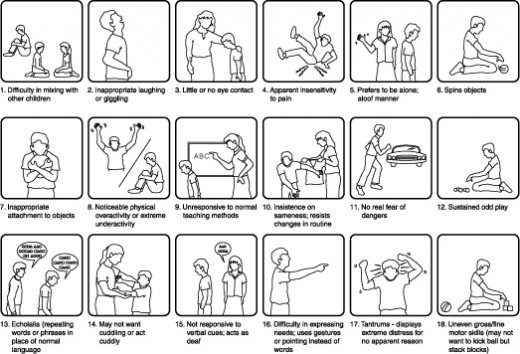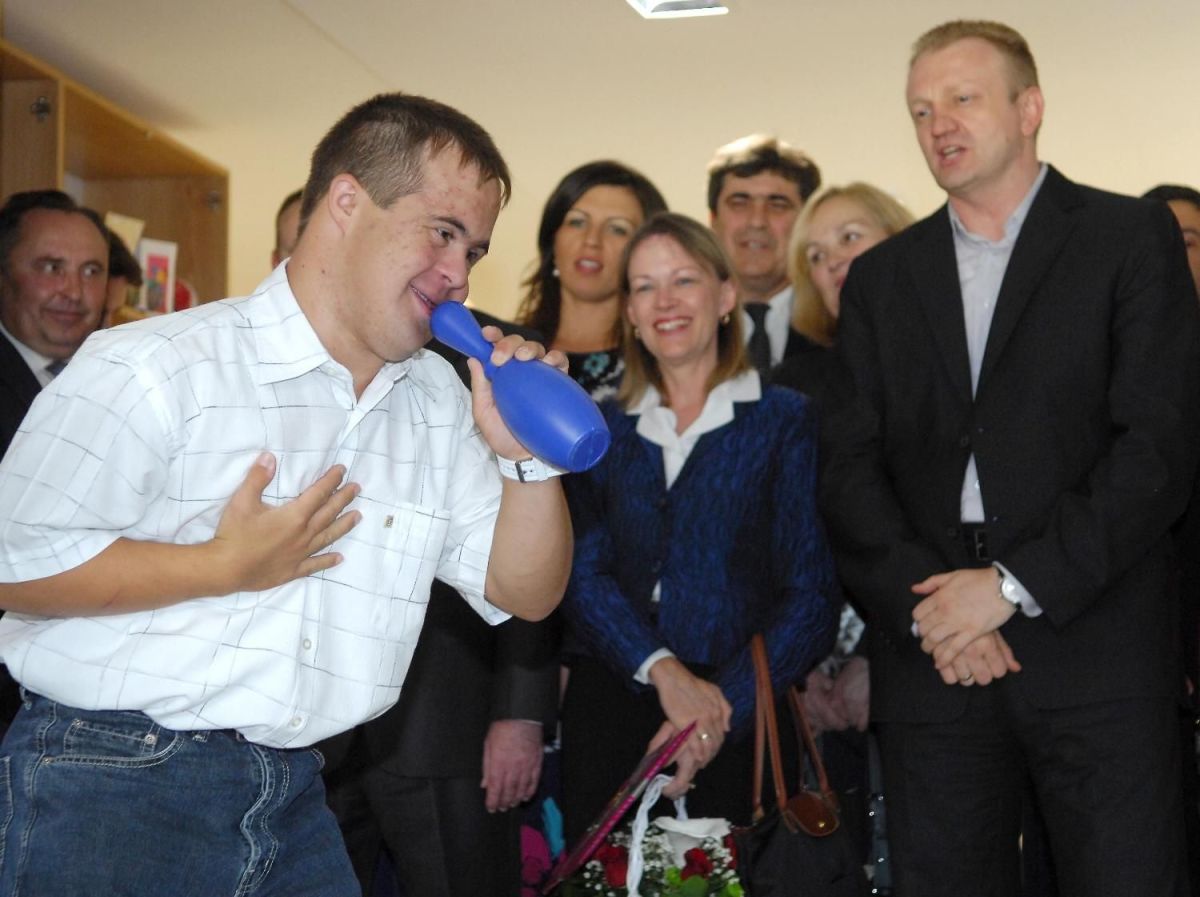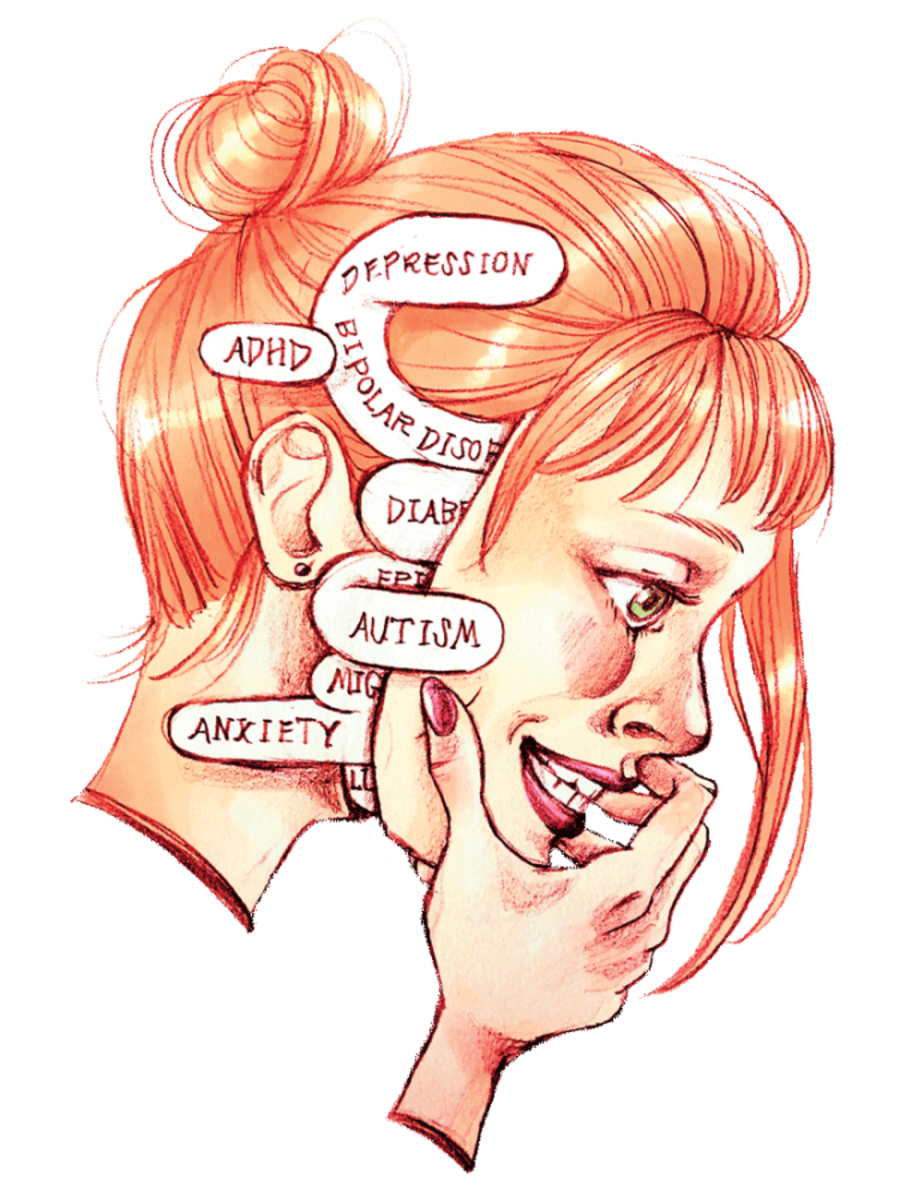People with Developmental Disabilities and Meeting Challenging Behavior

Introduction
Developmental disabilities are delays in development of certain cognitive and social capacities in people who have these various disabilities. Due to the difference in brain functioning, the disabilities can involve certain behaviors which are sometimes necessary to manage if you are teaching or caring for individuals with developmental disabilities. The purpose of this article is to examine the ways in which these behaviors can be managed, and hopefully the information will be of some help to families and staff who are caring for and teaching persons with developmental disabilities. I have not drawn on academic research for this article, I have relied solely on my own work experience and what I have actually learned, caring for and teaching adults with developmental disabilities.
It should be stated too, that I am going to use certain terms consistently, and that I will be using them to identify people and problems involved in this discussion. The common term for a person with a developmental disability receiving a social or educational service, is "consumer". The old term was "client". I personally do not see why the term consumer is better than the word client, consumer simply implies a business relationship, which is not any better than a client relationship. However, since consumer is the acceptable term, I will use this term consistently in this piece to refer to people with developmental disabilities who are receiving services in relation to their disabilities.
Also, I will be using the term challenging behavior to refer to behavior which is in some way a problem or difficult for consumer, staff and community.
Finally, I would like to state that the point of this article is not to advocate or teach people to force persons with developmental disabilities into a mold; it is not to say that those with these disabilities are unacceptable or that they must be changed. One of my main conflicts while working in the field has been with people wanting to do just that; judgmentally trying to force consumers to conform to acceptable patterns of society. Rather, the emphasis in this piece is on challenging behaviors that are objectively a problem for consumer, staff, and community, and to offer means for dealing with such behaviors.
Of course, readers, whether you have a developmental disability, are staff or family of consumers, should feel free to challenge what I am saying here. It is important that persons with developmental disabilities advocate for themselves and in this way are part of the whole world community.

My Experience
In 1996, I started taking care of people with physical disabilities in their homes. The people I took care of had quadriplegia, ALS (known as Lou Gehrig's Disease), Frederick's Ataxia, Multiple Sclerosis, and another consumer was elderly. I transferred consumers from bed to wheelchair and into bed, onto shower chairs and toilets; I did bowel care; I bathed consumers and groomed them; I changed their catheters and gave them medications; I assisted them at doctor's appointment and transported them; I helped consumers do range-of-motion exercises; I did the shopping and the cooking; I learned to help consumers communicate with the use of a spell board; I kept them safe and active.
I did that for about four years, then I ended up employed working as an instructor in a day program for people with developmental disabilities. The point of the day programs, also called community therapy, is to expose consumers to the community and to teach them social and practical skills in the community. It is a far cry from the days of consumers being cooped up in state hospitals.
During this time, I worked with consumers who had Autism and Autism Spectrum Disorder, Down Syndrome, Cerebral Palsy, Brain Trauma, Visual Disabilities; I worked with consumers who were verbal and non-verbal, and those who were low-functioning and high-functioning, the whole spectrum of Mental Retardation. I pretty much worked the gamut of functionings and forms of disabilities. I dealt with tantrums and violence, and consumers that experienced hallucinations. Meantime, I took care of paperwork pertaining to my consumers and developed and maintained relations with care home staff and the company's management; I also maintained communication and relationships with consumers' parents, community members, and those at the volunteer sites where my consumers received vocational training, as well as staff and faculty at the local community college where my consumers took classes. I ran meetings that established goals for consumers and established the progress they had made on past goals. I did all this from the year 2000 to the year 2010, with a few breaks in which I did other work in the Human Services field.
So, it is fair to say I have some experience in the field, and it is this experience from which I draw the following suggestions.
Do you think people with developmental disabilities should be able to develop any kind of relationship they want?
What To Understand First
Though, I always entered any situation with a consumer without preconceptions, and allowed it to unfold, it is important to understand the various disabilities and what are common problems or tendencies with each. It should be said, that everyone is an individual, and you generally can't make sweeping blanket statements about anyone; however, particular disabilities carry with them certain behaviors which must be met, at times.
So, it is important to understand that Autism most often involves what are called tantrums. To the person without the disability, it is difficult to understand what makes the tantrum happen. I think an illustration of my actual work experience could be illuminating.
The very first consumer with a developmental disability that I worked with had Autism, was non-verbal, and was diagnosed with profound mental retardation. He could walk, run, independently eat, and knew some sign language. And, beyond a doubt, he had tantrums. For convenience, we will call him Jeff, though that, of course, was not his name.
When I was hired to work with Jeff, he was in a group in the community-based day program for the company who hired me. It was a group of five consumers, one in a wheel-chair, another with violent episodes, one with schizophrenia that would often fall asleep out in public during program, a high-functioning consumer who had seizures, and then there was Jeff. What seemed like out of the blue, he would start screaming, biting his hand and stripping off his clothes and charge across the street. Well, the staff who was in charge of this group had his hands full. They needed help.
That's when I got hired.
What did I find out about Jeff? I learned there were things that set off his tantrums. In the field, these are called antecedents; which just means things that trigger challenging behaviors.
One of the signs, I guess a modified sign, that Jeff used to indicate he had a headache, was to point at his head. I have to say that Jeff had many motions he did with his hands; it is another characteristic of those with Autism to repeat certain behaviors, either verbally or physically. Jeff had an assortment of hand movements and various self-stimulating behaviors that he kept going pretty much constantly. The point to the head to indicate a headache could be subtle.
Well, one day, Jeff had a major tantrum; screaming and running around the college campus where we spent a good part of the day. Finally, he stopped, and I began asking him questions. He pointed to his head. I asked him if he needed a Tylenol. He made the sign for the word, "Yes". He also knew and used the sign for bathroom, which staff had to be conscious of to keep any problems occurring related to that. The other thing with Jeff, like many people with Autism, is that he became accustomed to specific patterns; if the day deviated from the pattern, it would disrupt him and set in motion a tantrum. He was accustomed to taking certain trips on the bus, at certain times and to certain places. He often would refuse to get off the bus, forcing you to take a day long trip with him in circles. However, with the right timing, including prompting him when we were to get off the bus, and if it was a familiar location to him, I could get him to get off the bus. Prompting is a technique we will discuss later.
The Tylenol ended the problem for the day. And it brings up another point: You should be conscious of the health of your consumer and any medical issues. I had another consumer with Autism who also had diabetes and high blood pressure. Any aggravation of his medical issues could trigger tantrums.
Another consumer I worked with, had a brain injury which caused her to have hallucinations; these hallucinations also set her into tantrums, screaming and becoming hostile, thrashing her arms about. It is important to understand where the challenging behaviors come from, because then it is easier to handle them appropriately. More on the consumer with the brain injury later.
Sometimes a consumer will have an issue with things other than their disability or medical condition. I worked with a consumer, we will call him Bobby, who had moderate mental retardation, was nearly non-verbal, had a vocabulary of maybe 50 words, had some difficulty walking, and, when angry, would slap or scratch the nearest person or grab and pull their hair. A hand-full.
However, with Bobby, I was able to determine what set off his violence. Strangely, if a mother in the near environment was speaking harshly to her child, it inevitably triggered Bobby's anger and he would hit someone. At that time, I would either begin talking to Bobby, using a technique we will discuss later called "redirection", or I would make sure no one was within his reach, or I would see his anger rising and tell him to stay calm firmly. All of these techniques worked, at different times. You have to be aware of what is happening in the environment and with the consumer to pull these things off. And you must be aware that with certain disabilities, such as Autism, consumers can be very sensitive to certain things physically and psychologically.
Having laid a little groundwork for what we are talking about, I'd now like to delve into what actions you can take to meet challenging behaviors.
The Techniques
Sun Tzu, in the Art of War, an ancient Chinese text on war, said that the best warrior wins every battle without fighting. It means to take care of things before-hand, so that the battle never happens in the first place.
Activities
One of the main ways you can achieve this in the day program, is by having a fairly well-structured set of activities going on that are engaging to the consumers; either that or you can think well on your feet to come up with plenty of things to do. Admittedly, I was pretty loose with the structure of the activities I created for my consumers, but I was confident we could find things to do.
So, in this you should keep in mind the tastes of the consumers; some will like crafts, art, and those kinds of things; some are more physical, they want to toss a Frisbee or football. I have trained in martial arts, so I actually used to teach my group Karate. Find events in the community they will all enjoy; a performance, there are even free ones you could attend; an art exhibit; find a volunteer site that they will enjoy. I had consumers who loved animals so we volunteered at the local animal shelter. Also, you make it fun. Entertain them a little.
If they are busy and engaged, they don't have time to get agitated or engage in disruptive behavior.
By the same token, anyone can get over-stimulated. I think it is important to have times in the day when all are quiet, not engaged too heavily, just relaxing. This is important for everyone.
Have games on-hand that are educational and entertaining. Even an Uno deck comes in handy, or some fake money to practice money skills. Be creative.
Discussion
Good old-fashioned talking. Believe it or not, it does work. If a consumer is having a problem, talk to them about it, discover what it is that is bothering them, and if it's with another consumer, involve them too.
One of my consumers had Asperger's Syndrome. He was into girls, and some of them were into him. Unfortunately, he could not always tell when they absolutely were not interested in him. Join the club.
One time, he decided to sit by a girl in the cafeteria at the community college that I took him to for classes, and the girl had on headphones and was reading a book. He proceeded to talk to her, chat her up, and he clearly could not tell that she was more interested in her music and book. I went up to Frankie (we'll call him), and pointed out to him that the girl had headphones on and was reading. He said thanks and moved on. It was as simple as that.
Prompting
Prompting is a technique which is the equivalent of a verbal Post-It. You tell the consumer ahead of time what is happening next or use certain key words that cancel a challenging behavior. With Jeff, he would do inappropriate things with his hands, and the prompt, "Where do your hands go?" often stopped him from putting his hands down his pants or other such things.
I worked with a consumer with Prader Willie, we will call him Vince, a condition that makes the person over-eat even to the point of death if not put in check; the condition also brings with it a tendency to obsessively engage in certain activities. My group liked to go to a store that sold TVs, laptops, and video games and DVDs, and Vince loved to play video games that the store had on display for customers to try out. Well, we had other activities to move on to, and used the local bus to get from one community activity to the next. When it was time to catch the bus, Vince would still be playing the video game and refuse to budge.
This is where prompting comes in.
To a great extent, like with many people, many consumers have difficulty and need time to process any kind of change. The change from visiting the store to going to the bus can be difficult for those dealing with certain cognitive constraints. So, at least 20 minutes before it was time to catch the bus, I would remind Vince that we were going to catch the bus in 20 minutes. I would keep that prompt up in 5 minute increments. And it worked. It gave him time to process the information and move on.
This goes for other things, like consumers who like to dilly-dally in the bathroom. I've used prompts in a variety of situations.
Redirection
I think I can honestly say, this technique I used the most. It's like an Aikido move, you re-direct the mind and behavior away from where it's going.
With the consumer I worked with who had the brain injury and had hallucinations, we will call her Susie, her hallucinations would cause her tantrums; she would scream at by-standers, thrash her arms violently and shake in her wheel-chair.
We were having a nice time in the park, when she had one of her hallucinations; it should be said that her tantrums set off the other consumers, including Bobby, who would attack people; so it was crucial for me to calm the situation promptly. I had a bundle of potpourri in a netted sack which smelled nice and was pretty. I knelt next to Susie and showed her the potpourri bundle and said, "This smells very nice, would you like to see it." She smiled and took the bundle and smelled it and the tantrum was done.

Conclusion
It is important to not only understand the disabilities of the consumers you work with, but to understand consumers as individuals with specific needs and desires and tastes. All of these are important things to consider when planning activities, discussions, and the schedule for your group or individual consumer.
It is also important to consider yourself. I was once told that, for staff, burn out occurs within the first two years of doing this line of work. It can be stressful and thankless with little compensation. But you are working with a special population that is unusually loving and perceptive, and it is important not to underestimate consumers' capacity to understand you too, and that they are aware of much more than they are usually given credit. It is important that everyone, including those with disabilities, are included in the community, that the community learns from them as much as consumers learn from the community. Healthier communities are built on diversity and everyone's contributions, including yours as a care-provider, teacher or parent of a person with a developmental disability. Keep on keeping on.










